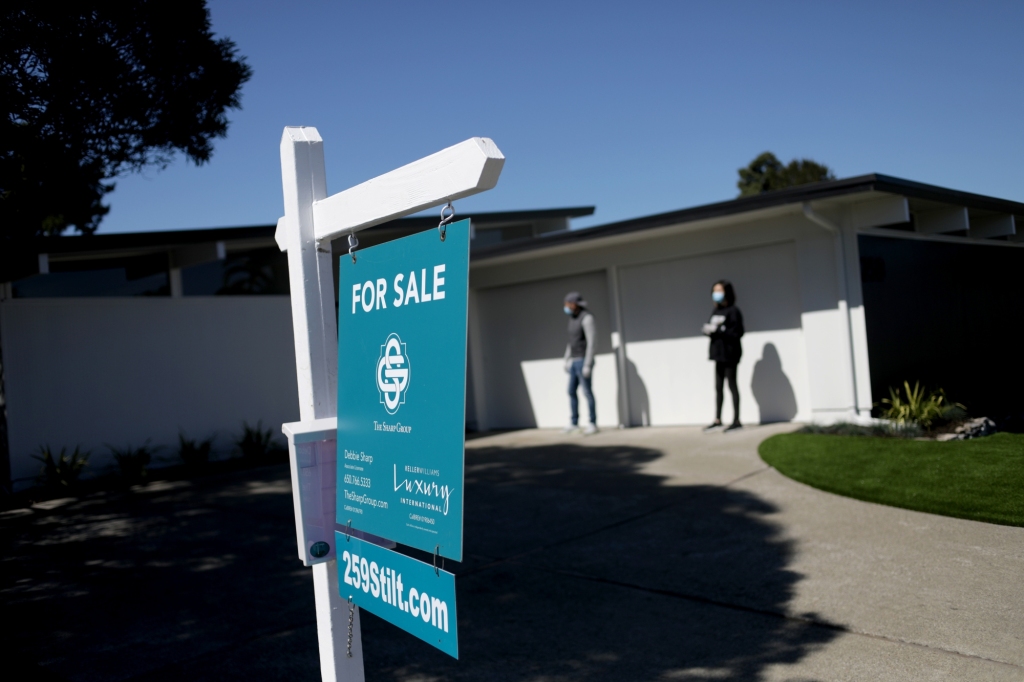Bay Area homebuyers weren’t finding any Black Friday specials this holiday season, as prices shot up 17% in November, marking another rapid rise in a record year.
The boom continued across the region, led by rising median single-family home prices in San Mateo County (up 23% from the previous year to $1.84 million), Alameda County (up 23% to $1.2 million) and Santa Clara County (up 21% to $1.57 million), according to CoreLogic data. Seven of the nine Bay Area counties saw double-digit gains, with only Marin and Napa lagging behind.
2020 was a hot year for home sales, East Bay Compass agent Paddy Kehoe said, but 2021 was “extremely insane.”
High demand and a low inventory of homes for sale drove the nation’s most expensive home market. Rising prices have left many would-be buyers frustrated, while sellers reaped even higher returns on their properties and could pick and choose from multiple offers. Historically low interest rates hovering around 3% also boosted the market.
The median price of an existing single-family home in the Bay Area hit $1.15 million in November, down slightly from an early summer peak of $1.2 million.
The Bay Area mirrored the rapid, national growth in residential real estate values in 2021. U.S. home values rose 19% between October 2020 and October 2021, according to the S&P CoreLogic Case-Shiller home value index.
“Low-tier priced homes are still in higher demand as entry-level buyers and investors continue to compete for the very limited supply,” CoreLogic economist Selma Hepp said in a statement. She expects 2022 to bring another strong year of price growth — around 7%.
Online broker Zillow estimates the median U.S. home price is now $316,000 — less than one-third of the Bay Area median.
Bay Area agents say buyers, expecting a continuation of remote work, are hunting for extra bedrooms, yards and family space across the region. Single-family home prices in San Francisco jumped 14% to $1.8 million and rose 12% in Contra Costa County to $850,000.
Bigger spaces and lots in Contra Costa and Alameda counties are drawing Silicon Valley workers less concerned about their commutes. And the prices are right.
“The Silicon Valley buyers feel like they’ve walked out of Nordstrom and into Macy’s,” said Kehoe, a veteran agent.
First-time buyers have been priced out of even the more-affordable East Bay communities, but demand has slowed little. Homeowners have been reluctant to sell, he said, with just a dozen recent listings in popular Lamorinda.
“There’s nothing for sale,” he said. “There’s nothing.”
Burlingame agent Jeff LaMont said bids from professional couples in tech and biotech are among the factors fueling rising prices. LaMont recently sold two homes in Millbrae Meadows for more than $500,000 above the listing prices. Upgraded properties are drawing a premium, and multiple offers and quick, as-is sales are standard.
He noted some returned interest in condos — Bay Area prices went up 14% from the previous year to $800,000 — as middle-class buyers lowered expectations for getting a single-family home.
Most of the clients coming into San Mateo County are working in tech, with incomes supplemented by equity grants, LaMont said. It’s tough competition for families outside the tech industry. “If you’re the average Joe,” he said, “it’s not going to get any easier.”
Suburbs with close proximity to tech headquarters and good schools remain a huge draw, agents say.
“Nobody has given up on buying a home,” Cupertino agent Ramesh Rao said of his clients, “and none of my sellers are keen to sell.”
Homeowners are telling Rao they’d rather hold on to properties and watch the prices rise since steady gains have been mounting every month. Homes in desirable Silicon Valley communities, including Saratoga, Los Altos and Cupertino, continue to top the wish-list of many tech professionals. “People still have a preference for the South Bay,” he said.
Kehoe said he did not expect the market to stay as hot as it has. The buying and selling during the dot-com bubble and preceding the subprime mortgage crisis paled in comparison, he said, although today’s buyers are much better qualified.
He expects it to slow down in the coming months, but added, “I don’t know how in the hell you can predict anything in California anymore.”










